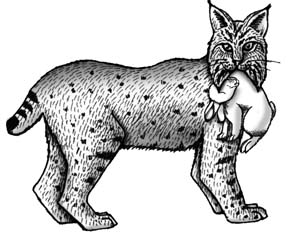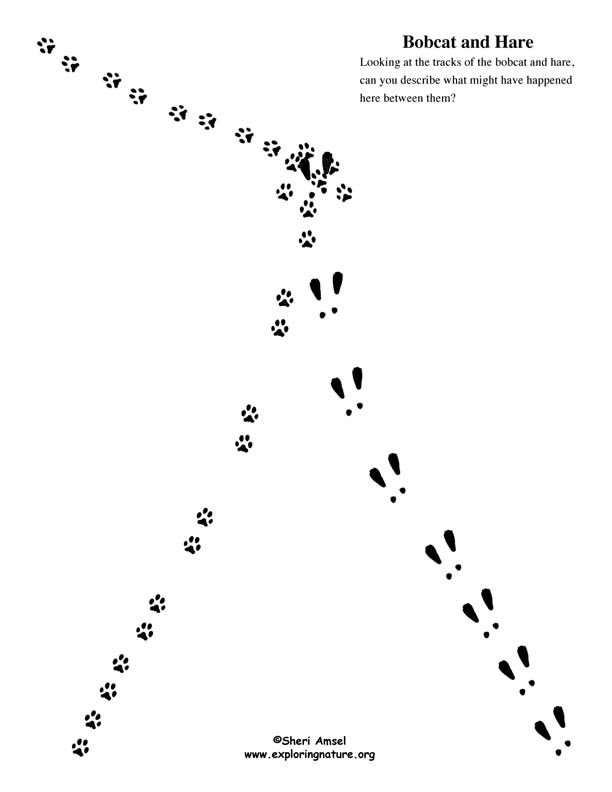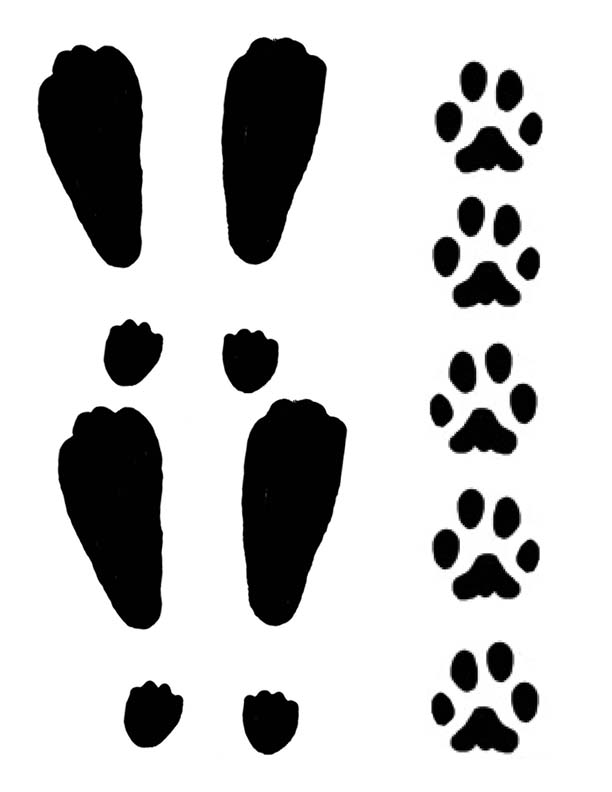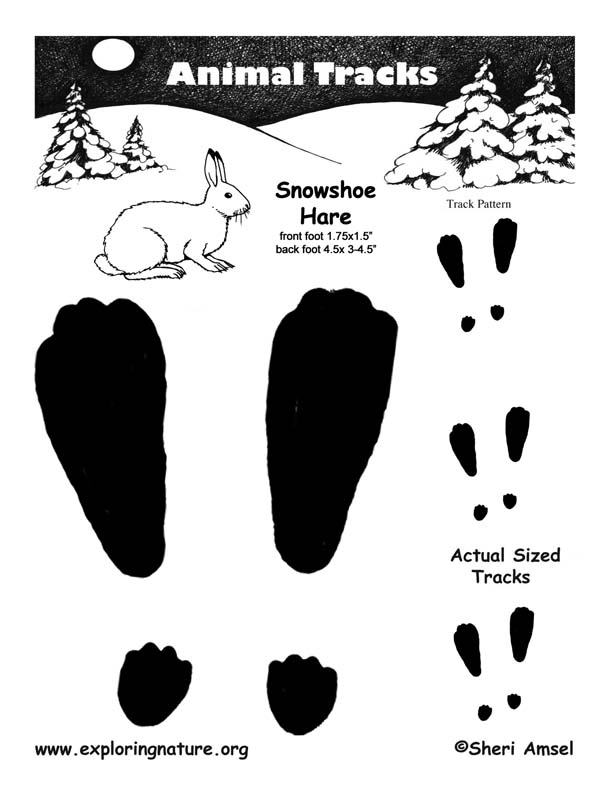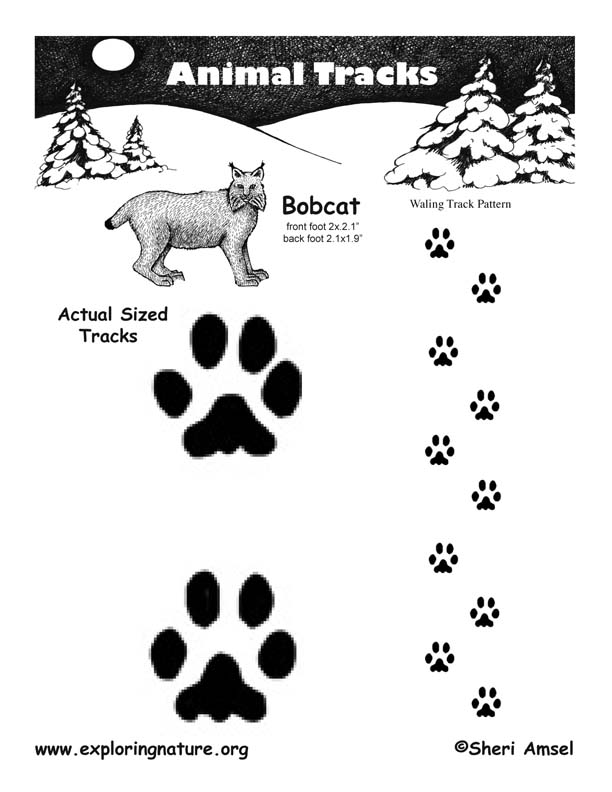

An observation is a description of something seen, heard or witnessed directly. An inference is a conclusion reached based on evidence and reasoning. Students will observe animal tracks, study the track pattern and make an inference about what might have happened.
Materials:
Activity:
1) Copy enough tracks to make a track pattern of about 20 sets of tracks.
2) Cut them out roughly.
3) Using the track pattern sheets as a guide, lay a track pattern with the bobcat and snowshoe hare tracks in the grass in your schoolyard or any open area. Secure them to the ground with the roofing nails so they won’t blow away (the nails can be collected afterward and used again) or tape for an indoor activity. Make sure you copy enough tracks to make a trail the kids can follow. The bobcat and hare tracks should come from different directions, then intersect and end with only bobcat tracks remaining. (Or any variation of this with which to test their powers of observation.)
4) Break students into teams of 3-4. They need to decide which direction each animal was going. They should make an inference about what happened between the animals.
5) Talk about what they observed and what they think might have happened (infered). This is a good opportunity to talk about predator prey-relationships and the difference between observation and inference.
When you research information you must cite the reference. Citing for websites is different from citing from books, magazines and periodicals. The style of citing shown here is from the MLA Style Citations (Modern Language Association).
When citing a WEBSITE the general format is as follows.
Author Last Name, First Name(s). "Title: Subtitle of Part of Web Page, if appropriate." Title: Subtitle: Section of Page if appropriate. Sponsoring/Publishing Agency, If Given. Additional significant descriptive information. Date of Electronic Publication or other Date, such as Last Updated. Day Month Year of access < URL >.
Amsel, Sheri. "Animal Tracking Observation vs. Inference Activity" Exploring Nature Educational Resource ©2005-2024. December 15, 2024
< http://www.exploringnature.org/db/view/1339 >
